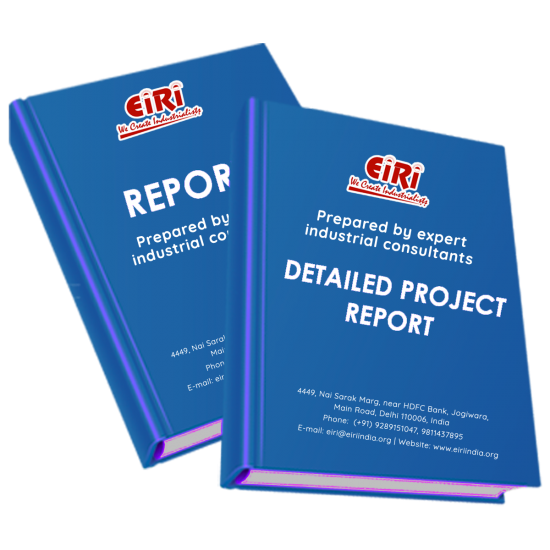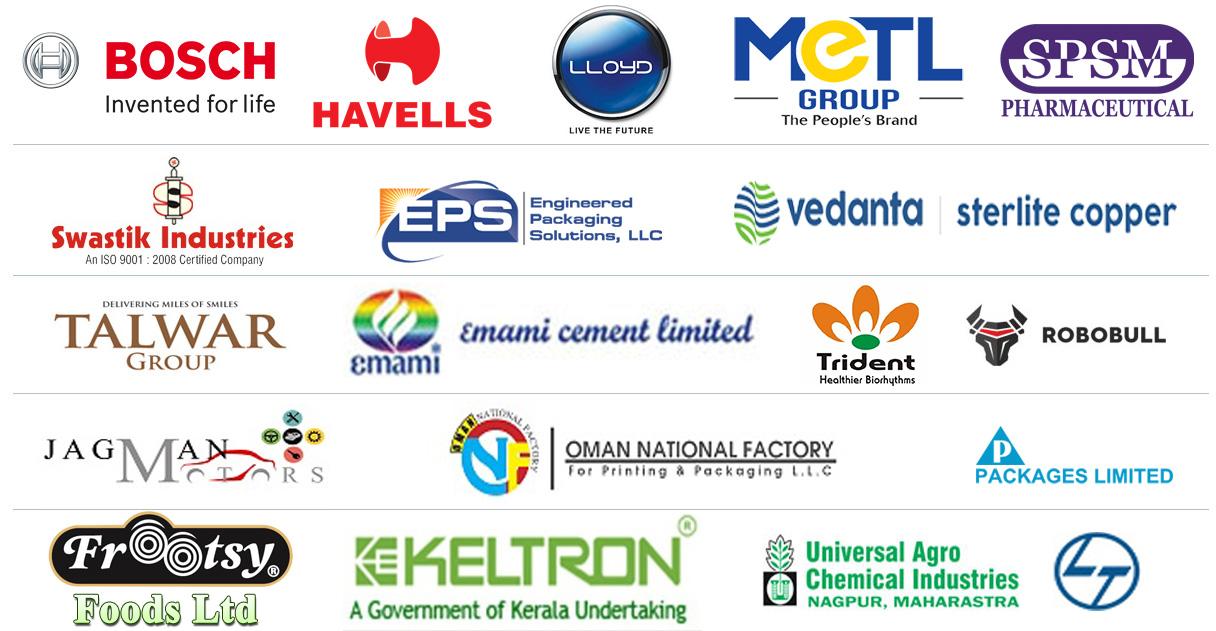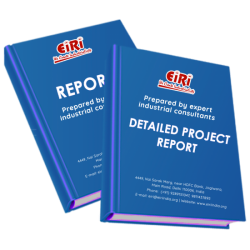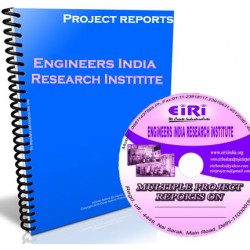Detailed Project Report on Citric Acid (Anhydrous)

- More than 40 years of experience
- Managed by expert industrial consultants
- ISO 9001-2015 Certified
- Registered under MSME, UAM No: DL01E0012000
- 24/5 Research Support
Get your quesries resolved from an industry expert. Ask your queries before report or book purchase. - Custom Research Service
Speak to the our consultant to design an exclusive study to serve your research needs. - Quality Assurance
All reports are prepared by highly qualified consultants & verified by a panel of experts. - Information Security
Your personal & confidential information is safe & secure.
CITRIC ACID (ANHYDROUS)
[EIRI/EDPR/4276] J.C.: 2457XL
INTRODUCTION
Citric acid (C6H8O7, 2 - hydroxy - 1,2,3 - propane tricarboxylic acid), a natural constituent and common metabolite of plants and animals, is the most versatile and widely used organic acid in the field of food (60%) and pharmaceuticals (10%). It has got several other applications in various other fields. Currently, the global production of citric acid is estimated to be around 736000 Tons/Year (TPA). In Brazil, almost the entire demand of citric acid is met through imports. There is constant increase (3-4%) each year in its consumption, showing the need of finding new alternatives for its manufacture.
Citric acid was first isolated by Karls Scheels in 1874, in England, from the lemon juice imported from Italy. Italian manufacturers had monopoly for its production for almost 100 years, and it was sold at high cost. This led extensive attempts all over the world to find alternatives way for its production, which included chemical and microbial techniques. In 1923, Wehmer observed the presence of citric acid as a by-product of calcium oxalate produced by a culture of Penicillium glaucum. Other investigations showed the isolation of two varieties of fungi belonging to genus Citromyces (namely Penicillium). However, industrial trials did not succeed due to contamination problems and long duration of fermentation. The industrial process was first open by Currie, in 1917, who found that Aspergillus Niger had the capacity to accumulate significant amounts of citric acid in sugar based medium. He also showed that high concentrations of sugar favoured its production, which occurred under limitation of growth. In the thirties, some units were implanted in England, in Soviet Union, and in Germany for the commercial production. However, the biochemical basis was only cleared in the fifties with the discovery of the glycolytic pathway and the tricarboxylic acid cycle (TCA). Consequently, an improved process employing submerged fermentation was developed in United States.
Although methods were well developed to synthesis citric acid using chemical means also, better successes were achieved using microbial fermentations, and over the period of time, this technique has become the method of ultimate choice for its commercial production, mainly due to economic advantage of biological production over chemical synthesis. Much attention has been paid on research to improve the microbial strains, and to maintain their production capacity.
Citric acid was first isolated from lemon juice and crystallized as a solid by Scheele in 1784. It is found as natural constituent of citrus fruits, pine apples, peaches other fruits and tissues. The citric acid extracted from these products is known as a “natural citric acid" in contrast to "fermentation citric acid" lemons, limes and pine apples are the principle sources of natural citric acid, which is produced chiefly in Italy, especially Sicily, and also in California, Hawaii and the West Indies.
It has made the United States self-sufficient in respect to the citric acid supply and greatly changes the commerce of the world in citric acid and calcium citrate.
Recent developments in the citric acid fermentation include the change from the older established shallow pan method to a deep tank submerged method.
A group headed by S.M. Martin of the National Research laboratory of Canada has been especially active in the development of the submerged production of citric acid from ferrocyanide-treated beet molasses by Aspergillus Niger.
It is intended to prepare a Feasibility Report to install a Citric Acid (Anhydrous) Powder production facility with an installed capacity of 30000 Tons / Year as a Green Field Project.
COST ESTIMATION
Plant Capacity 100 Ton/Day
Land & Building (16,725 sq.mt.) Rs. 23.73 Cr
Plant & Machinery Rs. 88.93 Cr
Working Capital for 3 Months Rs. 63.79 Cr
Total Capital Investment Rs. 181.16 Cr
Rate of Return 47%
Break Even Point 45%
CONTENTS
INTRODUCTION
MARKET OVERVIEW
MARKET SEGMENTATION
KEY MARKET PLAYERS OPERATING IN THE GLOBAL CITRIC ACID MARKET
WORLD PRODUCTION PATTERN OF CITRIC ACID
GLOBAL CONSUMPTION PATTERN OF CITRIC ACID
MICRO-ORGANISM FOR CITRIC ACID PRODUCTION
TABLE MICRO-ORGANISMS EMPLOYED FOR CITRIC ACID PRODUCTION
STRAINS SELECTION & IMPROVEMENT
INDUSTRIAL PRODUCTION OF CITRIC ACID
BLOCK DIAGRAM OF CITRIC ACID (ANHYDROUS) POWDER
RECOVERY OF CITRIC ACID (ANHYDROUS)
BASED ON THE FOLLOWING EMPIRICAL FORMULA
PRODUCTION TECHNIQUES & RAW MATERIALS
LIQUID FERMENTATION
TABLE RAW MATERIALS EMPLOYED IN SUBMERGED FERMENTATION FOR CITRIC ACID PRODUCTION
SOLID-STATE FERMENTATION
TABLE RAW MATERIALS EMPLOYED IN SOLID STATE FERMENTATION FOR CITRIC ACID PRODUCTION
PRODUCTION DETAILS OF CITRIC ACID
SURFACE CULTURES
SUBMERGED CULTURES
TECHNICALITIES IN CITRIC ACID PRODUCTION
SELECTION OF ORGANISM:-
SELECTION AND OPTIMIZATION OF MEDIA:-
OPTIMIZED MEDIA FOR SEED CULTURE:-
OPTIMIZED MEDIA IS USED FOR THE CITRIC ACID PRODUCTION IN FERMENTATION.
PREPARATION OF CULTURE
FERMENTATION:
ISOLATION
FERMENTER DESIGN/OPERATION CONCEPTS
THE FOLLOWING RECORDING INSTRUMENTS SHOULD BE PROVIDED WITH THE UNIT.
PROCESSING OF CITRIC ACID FROM SUGARCANE MOLASSES
PREPARATION OF INOCULUMS
FERMENTATION
ESTIMATION OF SUGARS
EXTRACTION OF CITRIC ACID
ESTIMATION OF CITRIC ACID
SAMPLE PREPARATION
HPLC ANALYSIS
STATISTICAL ANALYSIS
FACTORS AFFECTING CITRIC ACID PRODUCTION
PROCESS PARAMETERS
PROPERTIES
USES & APPLICATION OF CITRIC ACID
BIS SPECIFICATIONS
QUALITY TESTING REQUIRED FOR CITRIC ACID
QUALITY CONTROL TEST FOR RAW MATERIAL
MOLASSES
LIME
SULFURIC ACID
ANTIFOAMING OIL
RAW MATERIALS SUPPLIERS
SUPPLIERS OF PLANT & MACHINERY
WASTE GENERATION & MANAGEMENT/GREEN BELT
GREEN BELT
WASTE WATER
WASTE
HEALTH SAFETY AND ENVIRONMENT
ANTICIPATED ENVIRONMENTAL IMPACTS
CONSTRUCTION PHASE
OPERATION PHASE
MITIGATION MEASURES (PROPOSED)
HSE REQUIREMENTS
SAFETY & OCCUPATIONAL MEASURE (STORAGE/HANDLING OF RAW MATERIAL & PRODUCT)
PROPOSED IMPLEMENTATION SCHEDULE
PROJECT FINANCIALS
BASIS & PRESUMPTIONS (FOR PROFITABILITY WORKINGS)
APPENDIX – A:
01. PLANT ECONOMICS
02. LAND & BUILDING
03. PLANT AND MACHINERY
04. OTHER FIXED ASSESTS
05. FIXED CAPITAL
06. RAW MATERIAL
07. SALARY AND WAGES
08. UTILITIES AND OVERHEADS
09. TOTAL WORKING CAPITAL
10. TOTAL CAPITAL INVESTMENT
11. COST OF PRODUCTION
12. TURN OVER/ANNUM
13. BREAK EVEN POINT
14. RESOURCES FOR FINANCE
15. INSTALMENT PAYABLE IN 5 YEARS
16. DEPRECIATION CHART FOR 5 YEARS
17. PROFIT ANALYSIS FOR 5 YEARS
18. PROJECTED BALANCE SHEET FOR (5 YEARS)
How to Make Project Report?
Detailed Project Report (DPR) includes Present Market Position and Expected Future Demand, Technology, Manufacturing Process, Investment Opportunity, Plant Economics and Project Financials. comprehensive analysis from industry covering detailed reporting and evaluates the position of the industry by providing insights to the SWOT analysis of the industry.
Each report include Plant Capacity, requirement of Land & Building, Plant & Machinery, Flow Sheet Diagram, Raw Materials detail with suppliers list, Total Capital Investment along with detailed calculation on Rate of Return, Break-Even Analysis and Profitability Analysis. The report also provides a birds eye view of the global industry with details on projected market size and then progresses to evaluate the industry in detail.
We can prepare detailed project report on any industry as per your requirement.
We can also modify the project capacity and project cost as per your requirement. If you are planning to start a business, contact us today.
Detailed Project Report (DPR) gives you access to decisive data such as:
- Market growth drivers
- Factors limiting market growth
- Current market trends
- Market structure
- Key highlights
Overview of key market forces propelling and restraining market growth:
- Up-to-date analyses of market trends and technological improvements
- Pin-point analyses of market competition dynamics to offer you a competitive edge major competitors
- An array of graphics, BEP analysis of major industry segments
- Detailed analyses of industry trends
- A well-defined technological growth with an impact-analysis
- A clear understanding of the competitive landscape and key product segments
Need Customized Project Report?
- Ask for FREE project related details with our consultant/industry expert.
- Share your specific research requirements for customized project report.
- Request for due diligence and consumer centric studies.
- Still haven't found what you're looking for? Speak to our Custom Research Team
About Engineers India Research Institute:
Note: We can also prepare project report on any subject based on your requirement and country. If you need, we can modify the project capacity and project cost based on your requirement.
Our Clients

Our Approach
- Our research reports comprehensively cover Indian markets (can be modified as per your country), present investigation, standpoint and gauge for a time of five years*.
- The market conjectures are produced on the premise of optional research and are cross-accepted through associations with the business players
- We use dependable wellsprings of data and databases. What's more, data from such sources is handled by us and incorporated into the report
Why buy EIRI reports?
- Our project reports include detailed analysis that help to get industry Present Market Position and Expected Future Demand.
- Offer real analysis driving variables for the business and most recent business sector patterns in the business
- This report comprehends the present status of the business by clarifying a complete SWOT examination and investigation of the interest supply circumstance
- Report gives investigation and top to bottom money related correlation of real players/competitors
- The report gives gauges of key parameters which foresees the business execution























